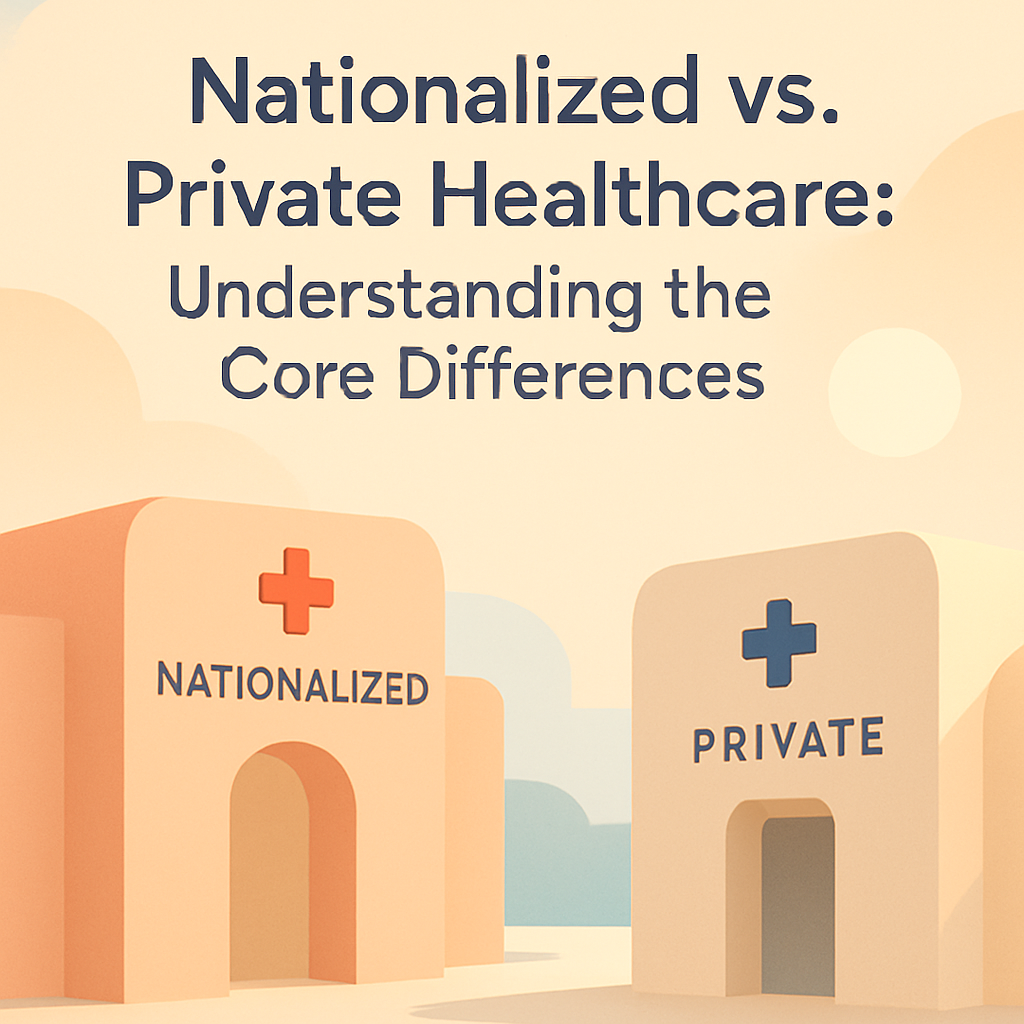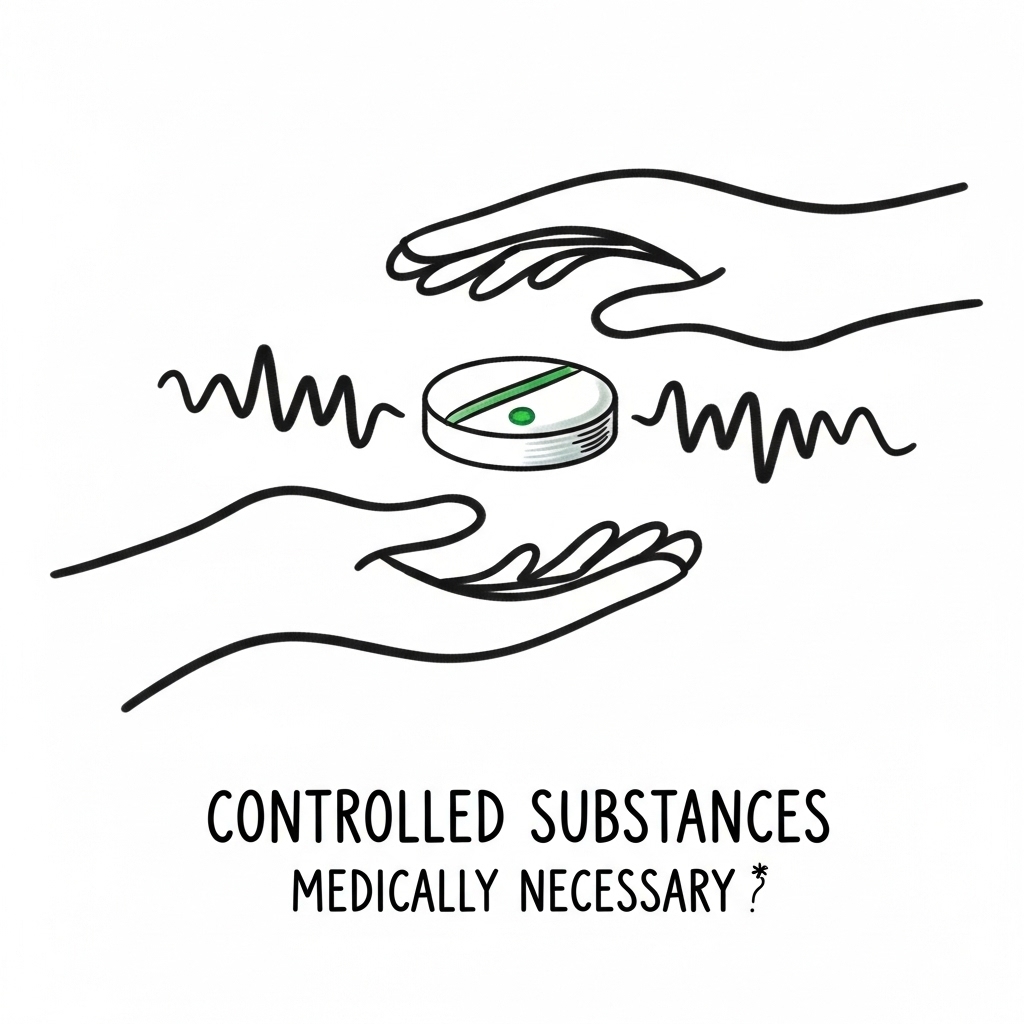
Introduction: More Than a Political Debate
The conversation around healthcare reform often turns into political shorthand—“Medicare for All,” “single-payer,” “free market.”
But if we strip away the slogans, we can have a more meaningful discussion about how different systems actually function and what tradeoffs come with each.
This isn’t about promoting one over the other—it’s about understanding the fundamentals so we can make informed choices.
What Is Nationalized Healthcare?
In its purest form, nationalized healthcare means:
- The government funds the system—typically through taxation.
- The government may also own and operate the facilities.
- Every citizen is covered, regardless of income or employment.
Examples include:
- United Kingdom (NHS) – Government-owned hospitals and clinics, publicly employed physicians.
- Canada – Privately delivered care but publicly funded through provincial plans.
What Is Private Healthcare?
In a private model:
- Healthcare is funded primarily through private insurance, employer-sponsored plans, and out-of-pocket spending.
- Practices and facilities are typically privately owned, though exceptions may exist in certain jurisdictions.
- Access and cost are determined largely by your coverage and ability to pay.
The United States is the most prominent example, though it also has public programs like Medicare, Medicaid, public health centers, Indian Medical Centers, and the VA.
Key Differences
1. Funding Source
- Nationalized: Broad-based taxation spreads costs across the population.
- Private: Premiums, deductibles, and copays paid by individuals and employers.
2. Access
- Nationalized: Universal access in theory, though wait times can be longer for non-urgent care.
- Private: Faster access if you can afford it, but uninsured or underinsured patients may face significant barriers.
3. Cost to the Individual
- Nationalized: Lower point-of-service costs (or none), but higher taxes.
- Private: Higher direct costs, but often shorter wait times and broader facility choice for those who can pay.
4. Provider Payment
- Nationalized: Negotiated fees set by the government.
- Private: Negotiated fees between insurers and providers, often higher but more variable.
Common Misconceptions
- “Nationalized means free healthcare.”
It’s not free—it’s pre-paid through taxes. - “Private care is always better.”
Quality varies widely in both systems; outcomes depend on many factors beyond the payment model. - “You can’t have both.”
Many countries blend the two, offering public coverage alongside optional private insurance.
Advantages and Drawbacks
Nationalized Advantages:
- Universal coverage
- Reduced administrative costs
- More predictable patient expenses
Nationalized Drawbacks:
- Longer wait times for elective care
- Treatment limitations due to age or disease severity, along with the rationing of high-cost treatments
- Less patient choice in providers and facilities
Private Advantages:
- Faster access to elective services
- Greater choice of providers and facilities
- Strong incentives for innovation
Private Drawbacks:
- Unequal access based on ability to pay
- Higher administrative costs
- Potential for financial hardship from medical bills
The US Hybrid Reality
The United States is already a hybrid system:
- Public programs: Medicare, Medicaid, TRICARE, VA
- Private insurance: Employer-sponsored and individual plans
- Out-of-pocket spending: Direct payments for uninsured or uncovered services
The challenge is balancing the efficiency and equity of a public model with the innovation and choice of a private model. As a nation, we possess abundant resources and technological prowess, making it imperative to ensure basic, fundamental healthcare access for all citizens. This would not only enhance public health but also allow us to fully leverage medical advancements for the collective benefit of our country.
Final Thoughts: Understanding Before Reforming
Any conversation about reform has to start with clarity about what we have and what we’re comparing it to. It doesn’t have to be an either/or situation between private and public healthcare.
The choice between nationalized and private systems isn’t about which is perfect—it’s about which tradeoffs we’re willing to live with and how to best implement a system that effectively covers our population and improves the collective health of our society.
If we want to improve healthcare in America, we need to stop arguing in slogans and start talking in specifics.
About the Author
Douglas J. Jorgensen, DO, CPC, FAAO, FACOFP
Dr. Doug is a physician, consultant, and national educator on healthcare policy and regulatory compliance. He works with providers, policymakers, and organizations to navigate and understand the structural realities of healthcare systems worldwide.


